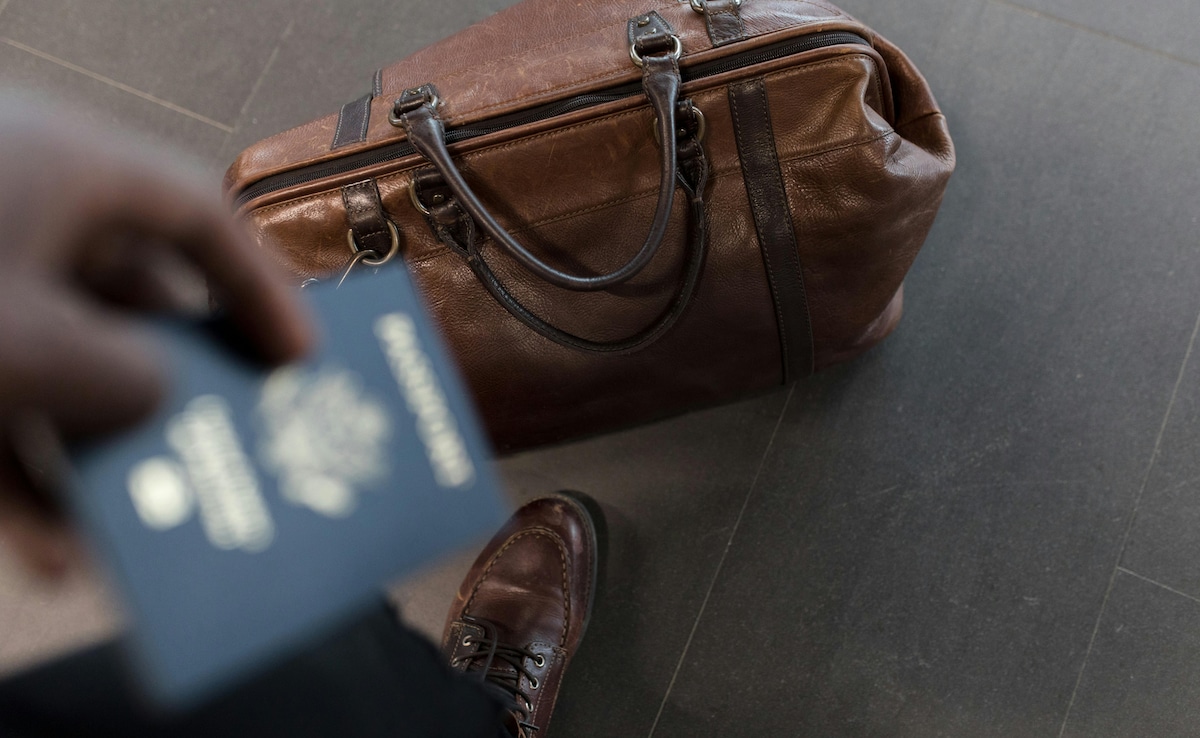
After a five-year pause, India has officially resumed issuing tourist e-visas to Chinese nationals. The announcement, made by the Indian Embassy in Beijing on July 24, 2025, marks a significant moment for the travel industry. For tour operators, heritage hotels, and spiritual hubs across the country, this move signals the revival of cultural connections and regional tourism. It also reintroduces India to a curious audience that has been absent from the country's tourism charts since 2020. But beyond the headlines and logistics, this reopening brings fresh opportunity and much more.
Also Read: Golden Visa On Budget: 9 Countries Offering Most Affordable Residency By Investment
Why Were Chinese Tourist Visas Suspended?
India suspended tourist visas for Chinese citizens in 2020 due to the pandemic and ongoing tensions along the border. While restrictions were gradually lifted for other nationalities, Chinese travellers remained excluded. This prolonged freeze resulted in a steep drop in footfall from China, from 3.4 lakh visitors in 2019 to just over 30,000 in 2023.
With diplomatic relations stabilising and direct flights expected to resume soon, the reinstatement of e-visas is being viewed as a positive step by both governments. The Chinese Ministry of Foreign Affairs called it a "beneficial move" that would promote closer ties and ease cross-border travel.
What Has Changed In The Visa Process For Chinese Nationals?
The e-visa process has been simplified to encourage inbound travel:
- Chinese citizens can apply online via the Indian Embassy's official portal
- Appointments can be booked at visa centres in Beijing, Shanghai, and Guangzhou
- Documents must be submitted in person for biometric verification
According to reports, tour operators are already developing curated itineraries with spiritual, wellness, and cultural themes. The Ministry of Tourism is also launching multilingual apps and participating in global roadshows to support the reboot.
Also Read: This Gulf Country Offers A 10-Year Visa Without A Job Or Property Requirement

Photo Credit: Pexels
Chinese Tourism In Numbers: Before And After
Here is a quick snapshot of how Chinese tourism in India looked, and what industry estimates predict:
- Chinese arrivals in 2019: 3.4 lakh
- Arrivals in 2023: Just over 30,000
- Top destinations: Delhi, Mumbai, Agra (Taj Mahal), Bodh Gaya, Jaipur
- Estimated spend per tourist: Rs. 1.5 lakh
- Projected arrivals in 2025-26: Over 2 lakh
- Share of inbound foreign tourists (2019): 2.7 percent
Also Read: What Is Germany's Freelance Visa And Why It Matters To Indian Travellers
Why Chinese Tourists Matter To India's Tourism Sector?
Before the pause, Chinese travellers accounted for a modest but meaningful share of India's foreign tourist arrivals. They brought diversity in travel preferences and had a reputation for mixing spiritual depth with urban experiences. Some common travel patterns included:
- Group tours covering the Golden Triangle: Delhi, Agra, Jaipur
- Buddhist pilgrimage routes such as Bodh Gaya and Sarnath
- Wellness breaks in Kerala, Uttarakhand, and Goa
- Shopping, temple visits, and cultural festivals
Tour operators noted a growing appetite for authentic, curated experiences that blended city breaks with quieter, spiritually meaningful escapes.
What This Means For Indian Tour Operators And Travel Startups?
With e-visas back in play, Indian tour companies are moving quickly to prepare:
- Mandarin support: Agencies are investing in Mandarin-speaking guides, interpreters, and language-specific websites
- Custom packages: Itineraries are being designed around Buddhist trails, heritage circuits, and Ayurvedic retreats
- Tech upgrades: Platforms like MakeMyTrip and Tripoto are expected to revamp UI and payment options to accommodate Chinese tourists
Travel startups focusing on inbound Asia markets, including those offering offbeat or slow-travel options, are also eyeing renewed traction and funding.
Also Read: Visa On Arrival, Direct Flights: Why Mauritius Is A Hit With Indian Travellers In Summer

Language And Cultural Challenges In Rebuilding Tourism:
Visa access is only part of the equation. To make Chinese travellers feel welcome and comfortable, the tourism ecosystem will need to address several gaps:
- Language support: Mandarin-speaking staff are scarce across hotels, museums, and transport hubs
- On-ground infrastructure: QR-coded menus, Mandarin signage, and city apps with language toggles are critical
- Cultural readiness: Destinations will need to understand food preferences, group travel etiquette, and even tipping expectations
These behind-the-scenes efforts will determine how well India can retain repeat travellers from China.
India's Buddhist Sites Remain A Strong Draw For Chinese Pilgrims:
India's deep Buddhist heritage continues to attract Chinese interest - from the time of monk Xuanzang to modern-day spiritual circuits. Sites such as:
- Bodh Gaya: Where Buddha attained enlightenment
- Sarnath: The site of Buddha's first sermon
- Nalanda: An ancient centre of Buddhist learning
...are expected to see increased footfall, especially with infrastructure being improved under government schemes like Swadesh Darshan and PRASHAD.
Heritage Cities May Witness A New Wave Of Tourism:
From Jaipur's palaces to Thanjavur's temples, India's heritage cities have long intrigued foreign travellers. With the return of Chinese tourists, these destinations have a fresh opportunity to spotlight:
- Traditional crafts and textiles
- Regional cuisines
- Iconic architecture and monuments
- Group tours and culture-centric itineraries are likely to play a major role in routing Chinese footfall back to these cities.
Wellness Tourism In India May Attract Younger Chinese Travellers:
Kerala, Uttarakhand, and Goa are well-placed to appeal to millennials and Gen Z from China who are seeking:
- Authentic Ayurveda retreats
- Certified yoga centres
- Clean, calm spaces for slow living and digital detox
Tourism boards are reportedly working on certifications and digital accessibility to strengthen this offering for international wellness seekers.

Photo Credit: Pexels
Local Businesses Could Benefit From Footfall And Spending:
The ripple effect of Chinese tourism will likely reach far beyond airports and big hotels. Local economies that rely on seasonal travellers, including:
- Homestay owners
- Regional guides and fixers
- Culinary tour organisers
- Handicraft artisans
...could see meaningful gains, especially in Buddhist belts and heritage towns where infrastructure already exists but needs demand to bounce back.
Kailash Mansarovar Yatra Resumes As Tourism Rebuilds:
This resumption of e-visas does not stand alone. Several ongoing initiatives point to a fuller revival of India-China tourism. The Kailash Mansarovar Yatra, which resumed in June 2025, is one such example. Organised by the Ministry of External Affairs, the pilgrimage now operates through:
- Lipulekh Pass, Uttarakhand
- Nathu La Pass, Sikkim
For many Chinese pilgrims, this is a once-in-a-lifetime spiritual journey - and an indicator that broader cross-border travel is on the rebound.
Also Read: India Launches Fully Digital E-Visa Facility For Kuwaiti Nationals: Application Process Explained

The Takeaway: More Than Just A Policy Shift
India's decision to resume e-visas for Chinese nationals is not merely a technical update. It has the potential to reset regional travel patterns, reinvigorate spiritual and cultural circuits, and boost revenue for micro and macro players alike. The real question now is whether India can deliver - not just welcome - a richer, multilingual, culturally-aware travel experience for a returning audience.
Track Latest News Live on NDTV.com and get news updates from India and around the world

